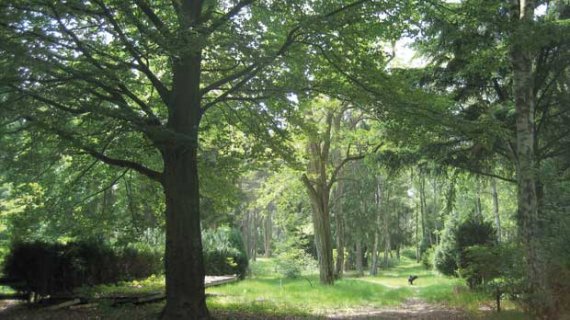Older forests contain more carbon per hectare than young forests. The standard view is that this age effect turns European forests into what is known as a carbon sink. But that is not the whole story, says Alterra’s Mart-Jan Schelhaas. European forests have actually got younger since the Second World War, from an average of 67 years in 1950 to 60 years in 2010. This is the conclusion from a reconstruction of the age structure of Europe’s forests over the past 60 years. Generally speaking, there is good information on the age distribution of today’s forests but far less on how that distribution has changed over the previous 60 years. The records kept by different countries of their forest stands vary in quality and methodology, which is why there are numerous gaps in our knowledge. What was there previously at sites where new trees have been planted? Now Schelhaas and a group of international colleagues have that overview.
Backcasting
Backcasting, a technique for ‘looking back’ at the past, was used to fill in the blanks in the data. ‘Each country has rules for felling trees. Applying these management rules in reverse lets you look back in time,’ says Schelhaas, giving a brief explanation of the method. This method was used to determine the distribution in age classes for 80 percent of the forest in 25 European countries. This gives some surprising results. For instance, forests were much older in the 1950s, just after the war, than was previously thought. Schelhaas: ‘We thought there must have been widespread felling during the war, replaced by newly planted trees after the war.’ But that was not the case. In 1950 a quarter of the trees were more than a century old; on average only 17 percent of the trees were that old after 1980. Even so, carbon storage has increased. Schelhaas thinks that is because the trees are planted more closely together than in the past. Trees grow fastest, and therefore absorb a great deal of biomass (carbon), when they are about 30 years old. Dutch forests older The differences within Europe are huge. The oldest forests on average are to be found in Switzerland (85 years) and the youngest in Ireland (19 years). Their youthfulness is because so many additional trees have been planted. Dutch forests are aged 56 on average. But that is 13 years older than they were in 1950. The biggest change has been in Finland. Industrial logging caused forests there to fall in age by 39 percent in 60 years: from 102 to 63 years. Schelhaas: ‘The trends in the different countries are roughly in line with what we already knew or thought. But the overall picture is still slightly different and now we have the figures to confirm this.’ The new data make it easier to estimate the effects of forestry management on the carbon cycle and consequently climate change.

